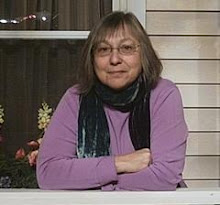 Greenpoint is a charming, village-like neighborhood in Brooklyn, where Polish is heard on the streets and restaurants serve traditional Polish cuisine from bilingual menus.
Greenpoint is a charming, village-like neighborhood in Brooklyn, where Polish is heard on the streets and restaurants serve traditional Polish cuisine from bilingual menus.The first families
Greenpoint was originally settled by Christine Vigne, from a French wine making family, and Dirck Volckerten. a Norseman. Because of Native American attacks, Dirck’s hot temper, which brought him to court many times, and the exile of his outspoken daughter Magdalena, the family abandoned Greenpoint for points north. The property was sold to Jacob Hay, and it was his daughter, Maria, her husband, Pieter Praa, and their descendants who farmed the land and kept the verdant quality from which the name Greenpoint derives. For almost two hundred years, Greenpoint remained isolated farmland.

Industrial transformation
Neziah Bliss, who married into the farm family, saw an opportunity. Bliss bought property, carved out streets, opened a public turnpike on what is now Franklin Street, and established a ferry service to Manhattan. With Greenpoint connected to the rest of the city by roads and ferries and miles of waterfront, Greenpoint was set for the influx of industry. Ship building was the primary industry. The first ironclad ship, the USS Monitor, which participated in the Civil War, was built here. Secondary industries such as printing and pottery factories followed, as did housing, churches and schools. Thus a small industrial village was formed.

A walk down Milton Street provides a glimpse of what it was like. The homes and churches are almost untouched on this landmarked block. At the head of the block stands St. Anthony of Padula, built in 1874 by the master church architect, PC Keely. In the center of the block are two churches, the Lutheran Church with its flying buttress and the Greenpoint Reformed Church, once the home of Thomas C. Smith who owned the Union Porcelain Works. Charming 19th century homes line both sides of the street, and at the end of the street is the waterfront with a factory building.
Enter the New York High Rise
 The high rise industry has arrived, attracted by the miles of waterfront that are prime real estate property. There will certainly be a big change from the apartment house built on Franklin Street by Pratt of Astral Oil Works for its workers and from the village as we have com
The high rise industry has arrived, attracted by the miles of waterfront that are prime real estate property. There will certainly be a big change from the apartment house built on Franklin Street by Pratt of Astral Oil Works for its workers and from the village as we have com e to know it. However, the landmarked clock on Manhattan Street keeps ticking, a remnant and reminder of the industrial past. Greenpoint’s name is itself a remembrance, a tribute to the original farming community.
e to know it. However, the landmarked clock on Manhattan Street keeps ticking, a remnant and reminder of the industrial past. Greenpoint’s name is itself a remembrance, a tribute to the original farming community.

No comments:
Post a Comment